 |
 |
 |
| |
17-Clinic US Study Pinpoints Keys to Giving Long-Acting Injected PrEP: Overcoming Challenges Integrating Injectable PrEP Into Care: Key Strategies From The PILLAR Study
|
| |
| |
HIVR4P 2024, Fifth HIV Research and Prevention Conference, October 6-10, 2024, Lima
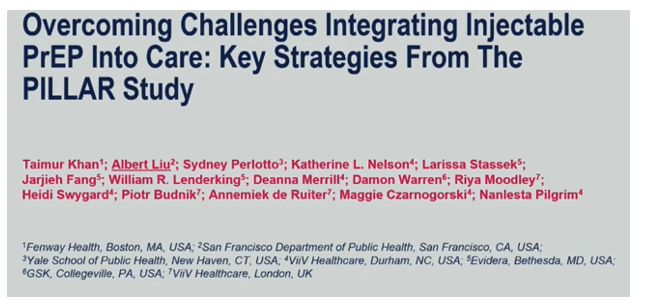
Mark Mascolini
PILLAR, a 12-month, open-label, 17-clinic study had no trouble identifying challenges to dispensing preexposure prophylaxis (PrEP) with long-acting cabotegravir (CAB LA) [1]: They listed 10. Systematic discussions and calls among PrEP clinics randomized to PILLAR support yielded more than a score of solutions and strategies for integrating CAB LA into practice.
PILLAR is the first industry-led HIV implementation study to recruit participants based on their gender versus sex at birth, including men who have sex with men (MSM) and transgender men in the United States [2]. Albert Liu (San Francisco Department of Public Health) and colleagues from six other centers and industry analyzed and presented "facilitators, solutions, and strategies to address challenges across six implementation journey stages of integrating CAB LA into care:" (1) practice preparation, (2) PrEP user selection, (3) benefits verification, (4) inventory management, (5) injection visits, and (6) continuation.
The study involved 17 clinics randomized into 11 dynamic implementation clinics and 6 routine implementation clinics. The 6 routine clinics got standard provider and PrEP user toolkits on giving and receiving CAB LA PrEP. The 11 implementation clinics also got enhanced toolkits, monthly 1-on-1 implementation facilitation calls, and quarterly group calls about sharing challenges and devising solutions. For this analysis there were 62 monthly 1-on-1 calls and 6 quarterly group calls. Participating centers included 6 nonprofit and community-based groups, 4 academic research centers, 4 federally qualified health centers, and 3 private clinics.
PILLAR-supported participants identified 2 practice preparation challenges: (1) preparedness and comfort giving injections, and (2) staff turnover and understaffing with increasing PrEP case loads. Solutions and strategies for CAB LA integration were task shifting, injection training, flexible scheduling, staff enthusiasm and high motivation to offer CAB LA, and prior experience with injectables.
Two PrEP user selection challenges emerged from PILLAR clinic discussions: (1) PrEP user hesitancy on getting injections and (2) contextual and structural influences such as stigma tied to PrEP. Solutions and strategies that emerged from PILLAR-facilitated parleys included improving PrEP user awareness and education, screening for stigma and pill fatigue, offering CAB LA to people positive for sexually transmitted infections or people who inject drugs, and creating PrEP user-provider discussion guides.
Challenges with benefits verification were (1) variable authorization requirements across insurance plans and (2) benefit type (pharmacy versus medical) approvals leading to differing experiences. Identified solutions and strategies to these challenges formulated by PILLAR participants were delegating staff to manage insurance, coordinating and collaborating with pharmacies, and using ViiV insurance support systems. (ViiV funded PILLAR.)
The study isolated two injection visit challenges: (1) scheduling injection appointments along with testing and lab requirements, and (2) lining up multiple coordination points to administer injections within the required dosing interval. PILLAR collaborators agreed on four tactics to clear these hurdles: flexible scheduling, using telehealth to support clinic flow, integrating other care needs for convenience, and offering injection training for different body types.
Two continuation challenges became clear: (1) scheduling within a dosing window, and (2) rescheduling injection visits and sequencing testing and lab needs. PILLAR participants proposed four solution strategies: improving scheduling and tracking systems, integrating injections with other care, facilitating support services like telehealth and transportation, and sending PrEP user reminders via multiple systems, such as text, phone, and email.
Liu and PILLAR colleagues listed 5 core strategies:
• Coordination across clinic departments
• Flexible injection scheduling
• Task delegation and/or shifting
• Telehealth and other care integration
• Support services for participant continuation
The researchers maintained that solution strategies PILLAR identified can be replicated at other centers. Whether these strategies can be adopted by PILLAR and non-PILLAR centers-and how well they address recognized challenges-await further study.
References
1. Khan T, Liu A, Perlotto S, et al. Overcoming challenges integrating injectable PrEP into care: key strategies from the PILLAR study. HIVR4P 2024, Fifth HIV Research and Prevention Conference, October 6-10, 2024, Lima. Abstract PRC198.
2. ClinicalTrials.gov. A study evaluating implementation strategies for the delivery of cabotegravir in low and high-volume PrEP sites in the United States (PILLAR). ClinicalTrials.gov ID NCT05374525. https://clinicaltrials.gov/study/NCT05374525
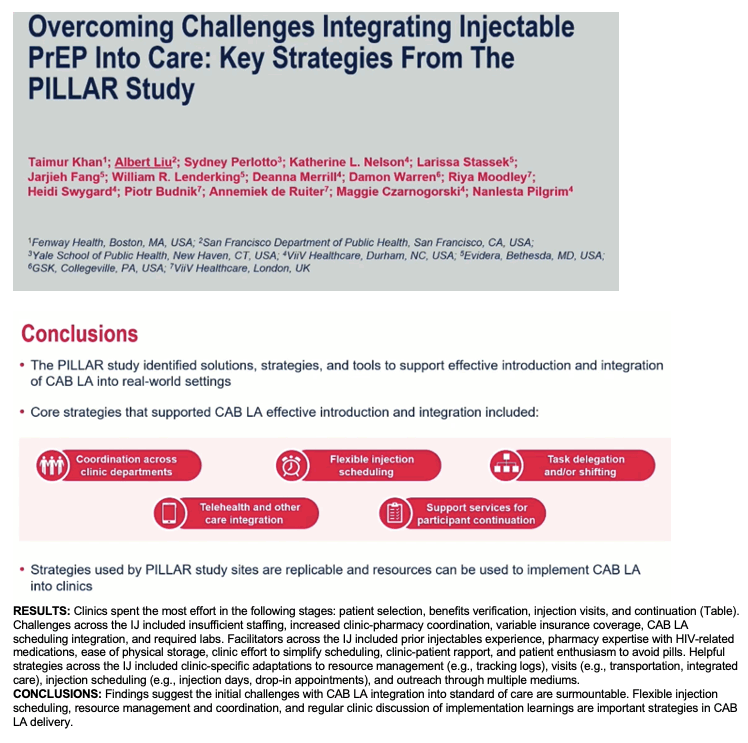
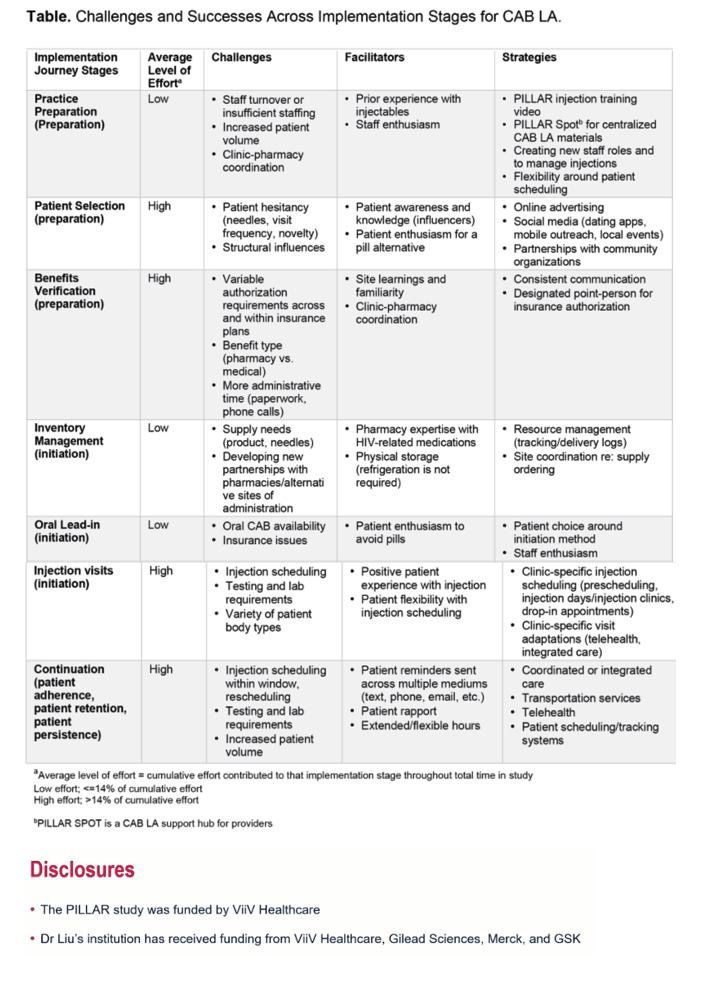
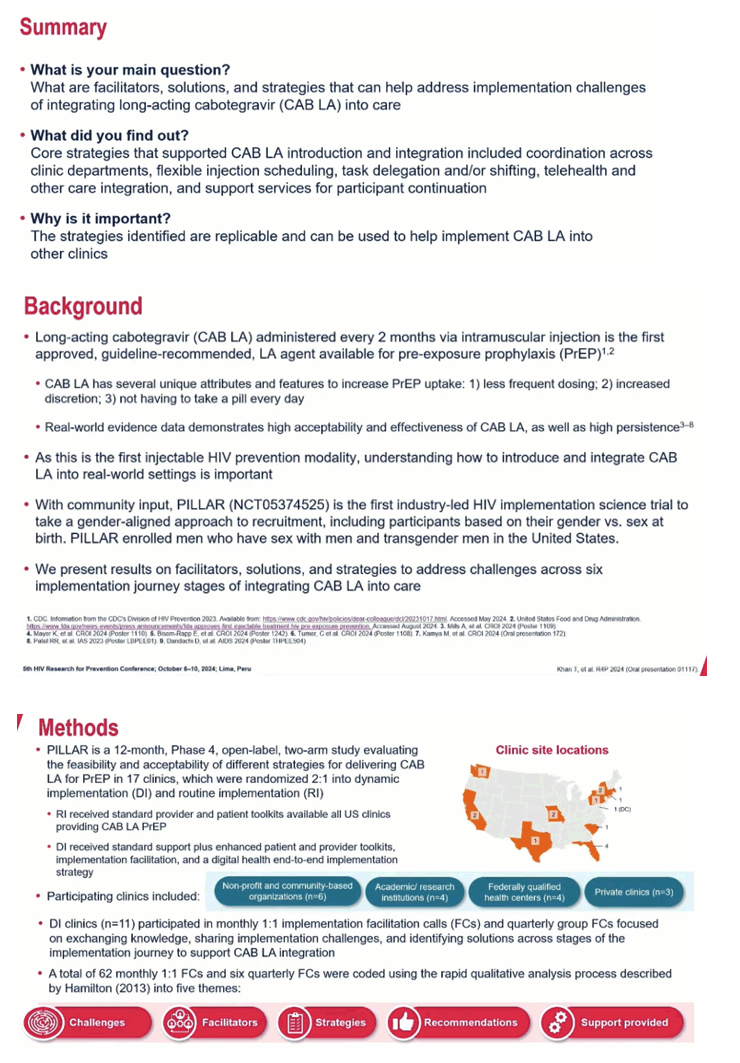
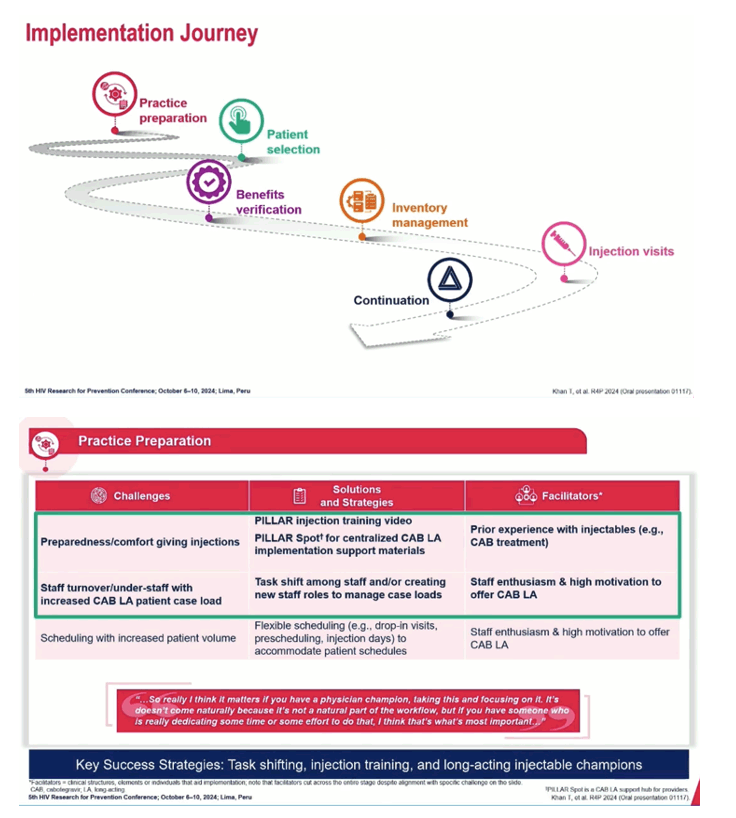
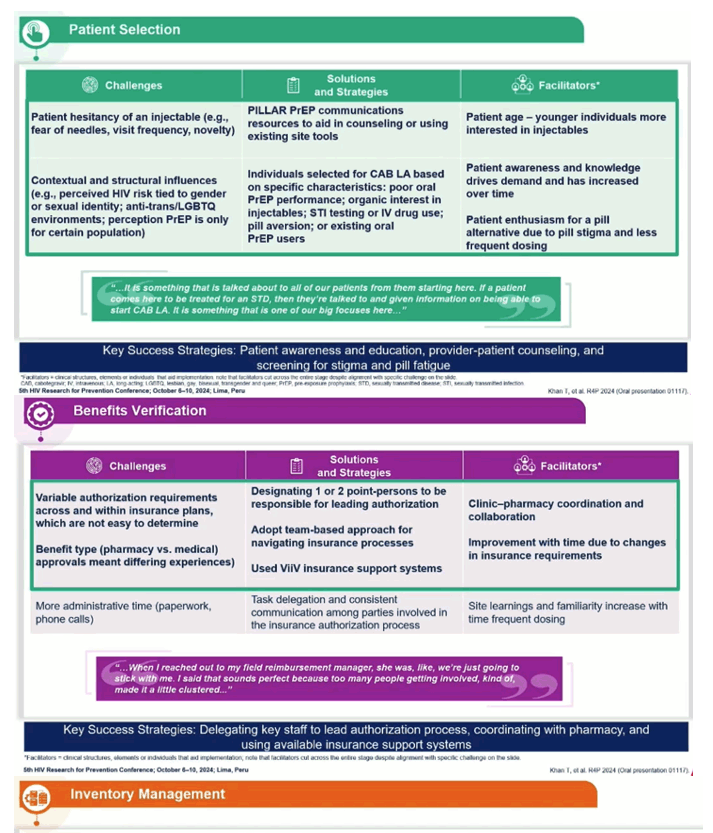
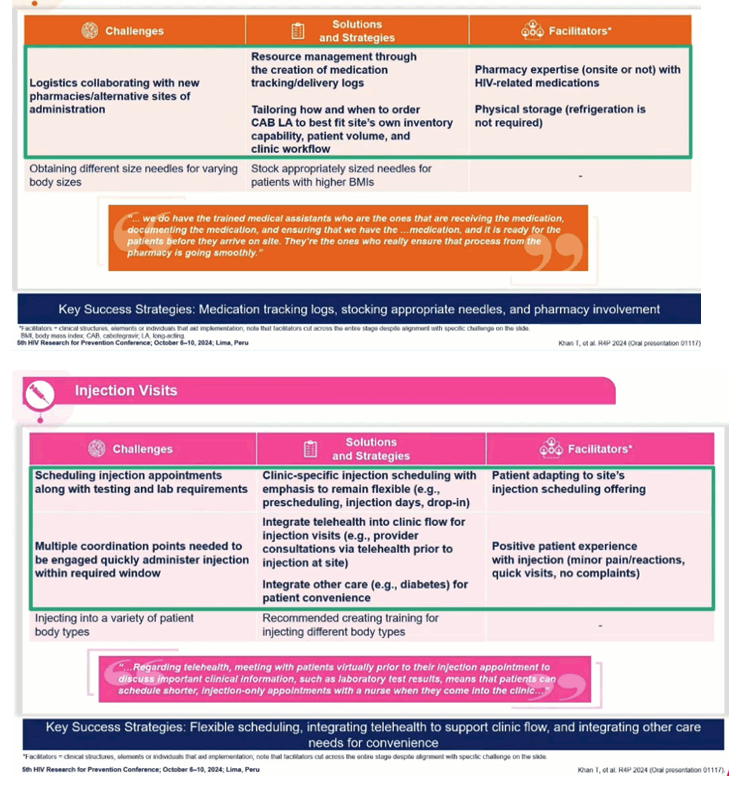
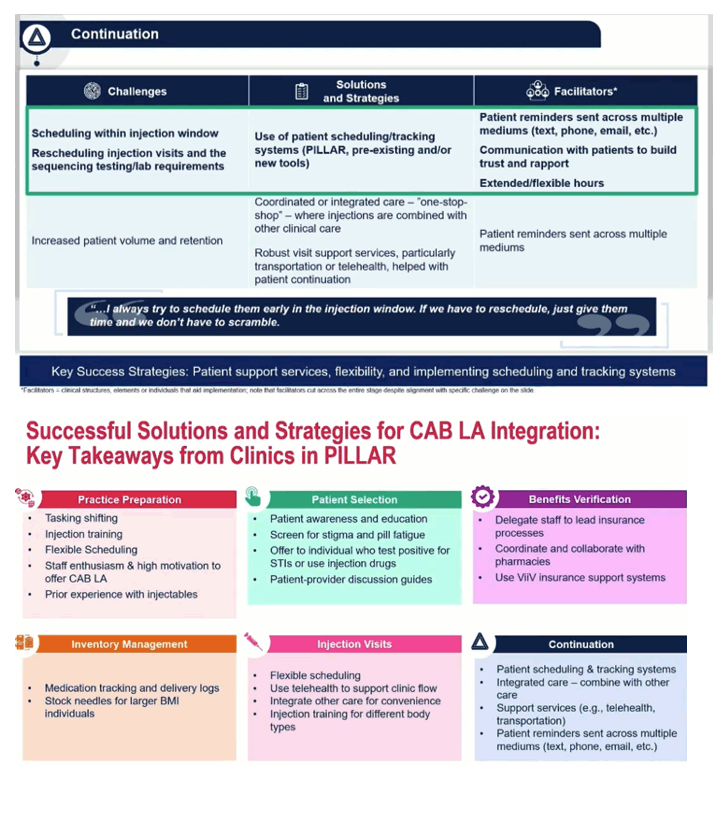
|
| |
|
 |
 |
|
|